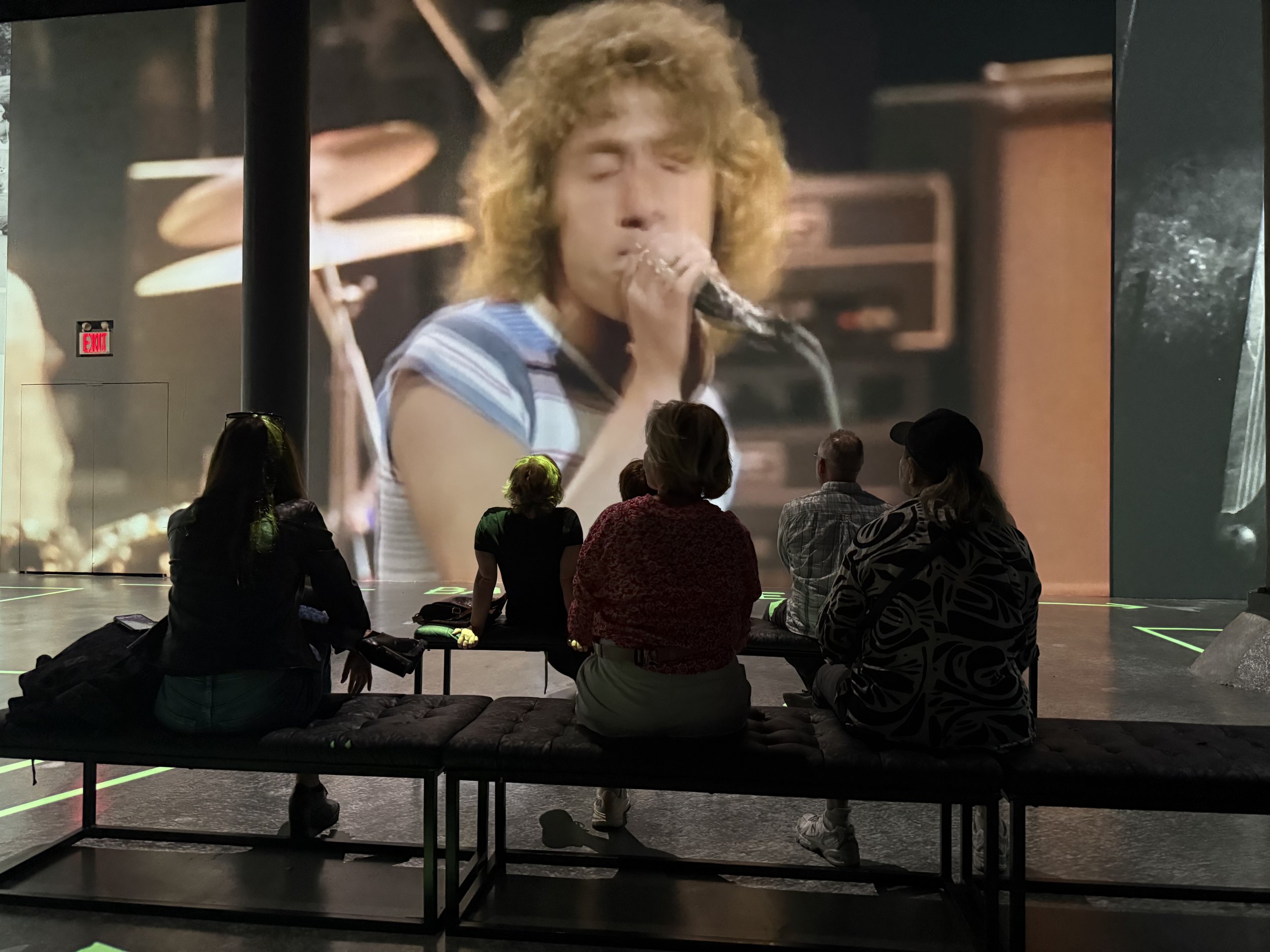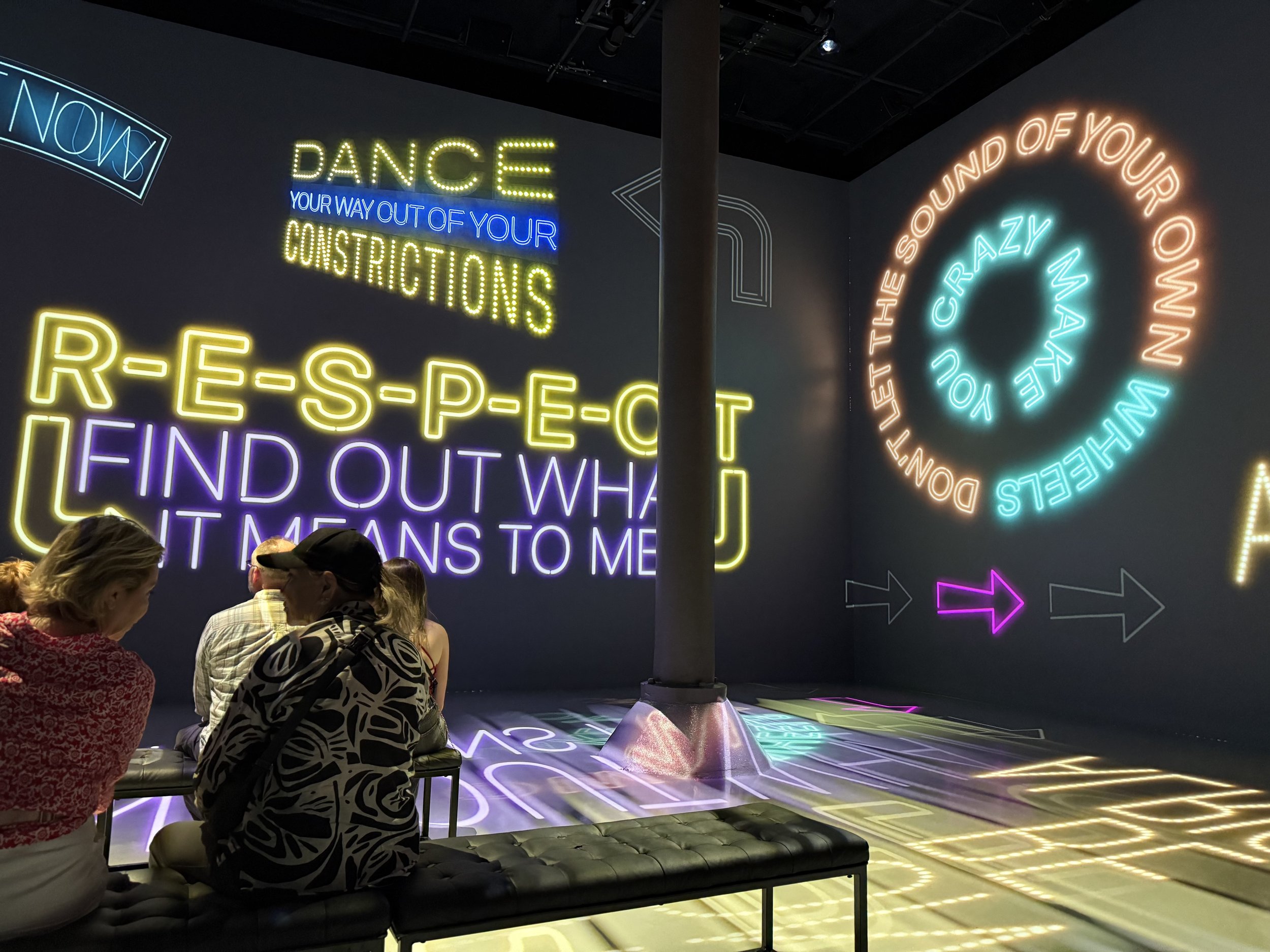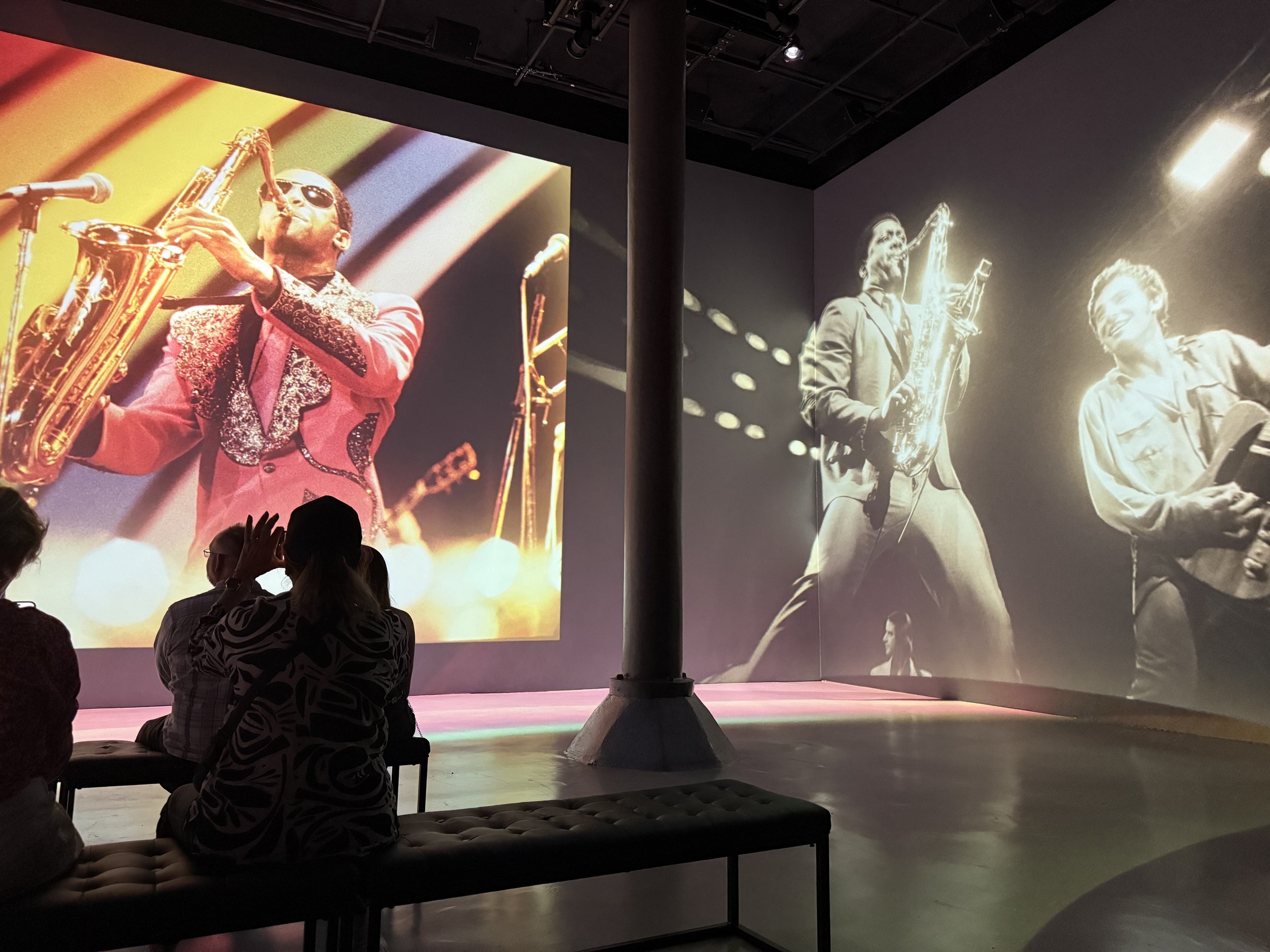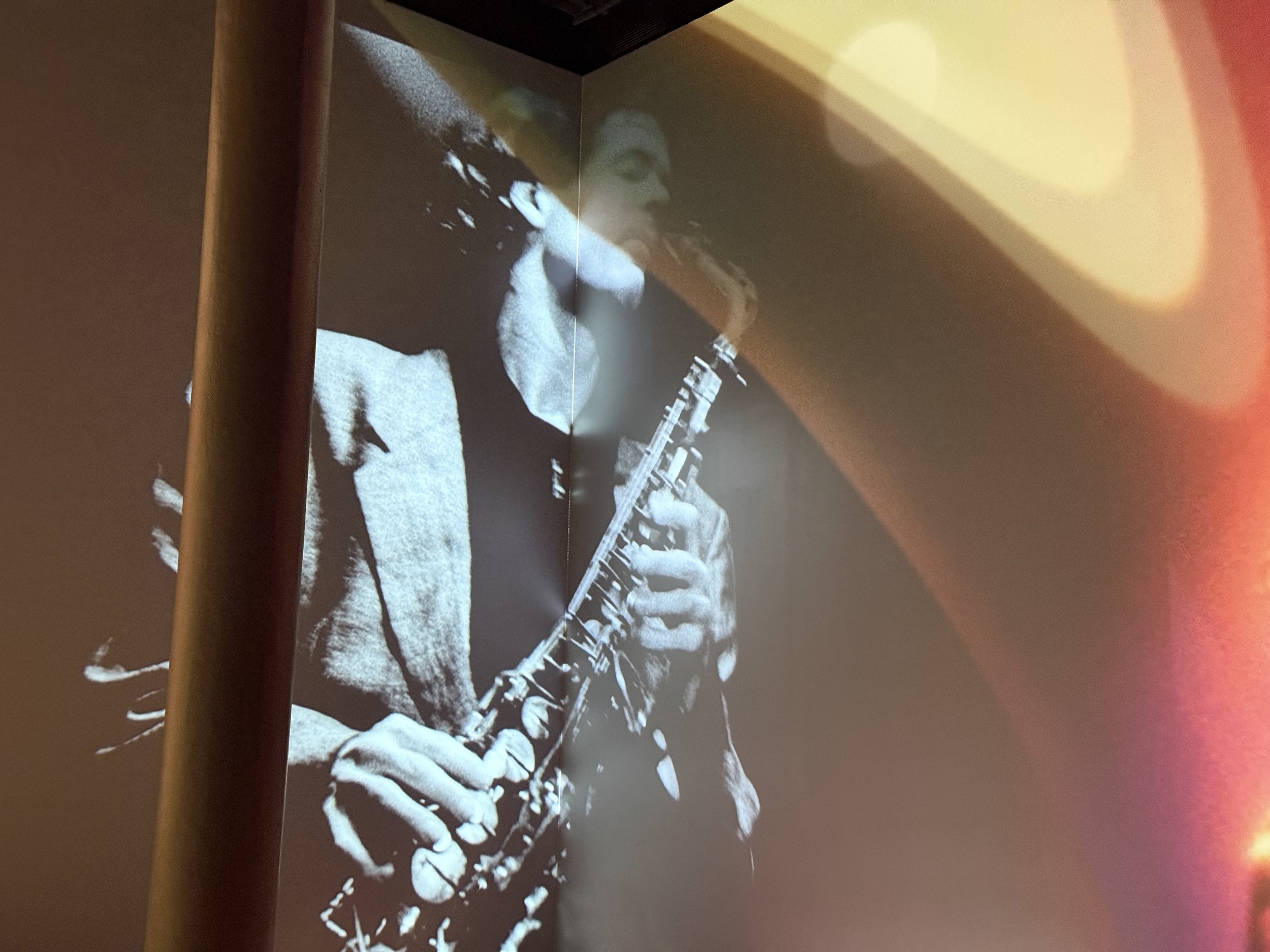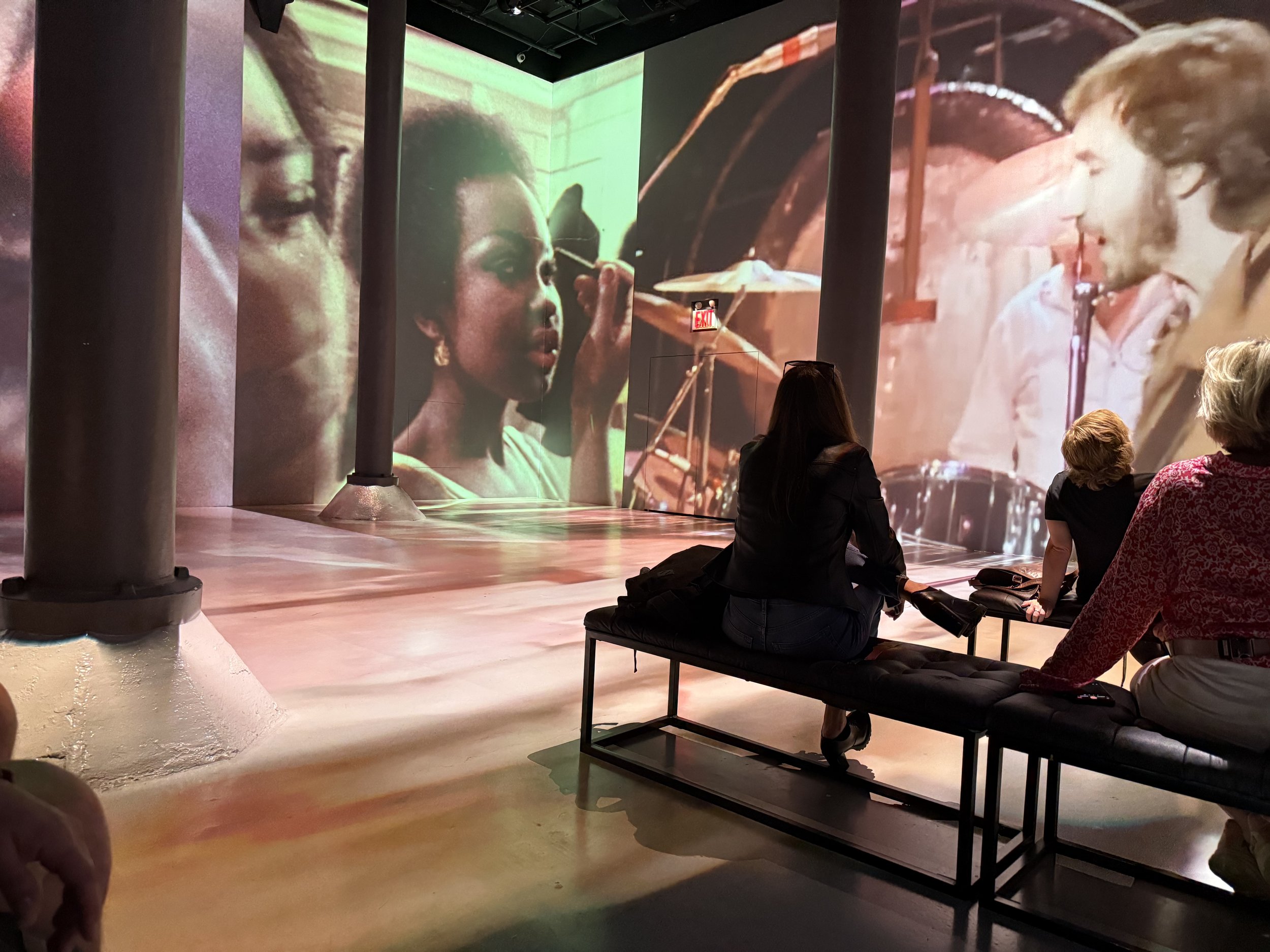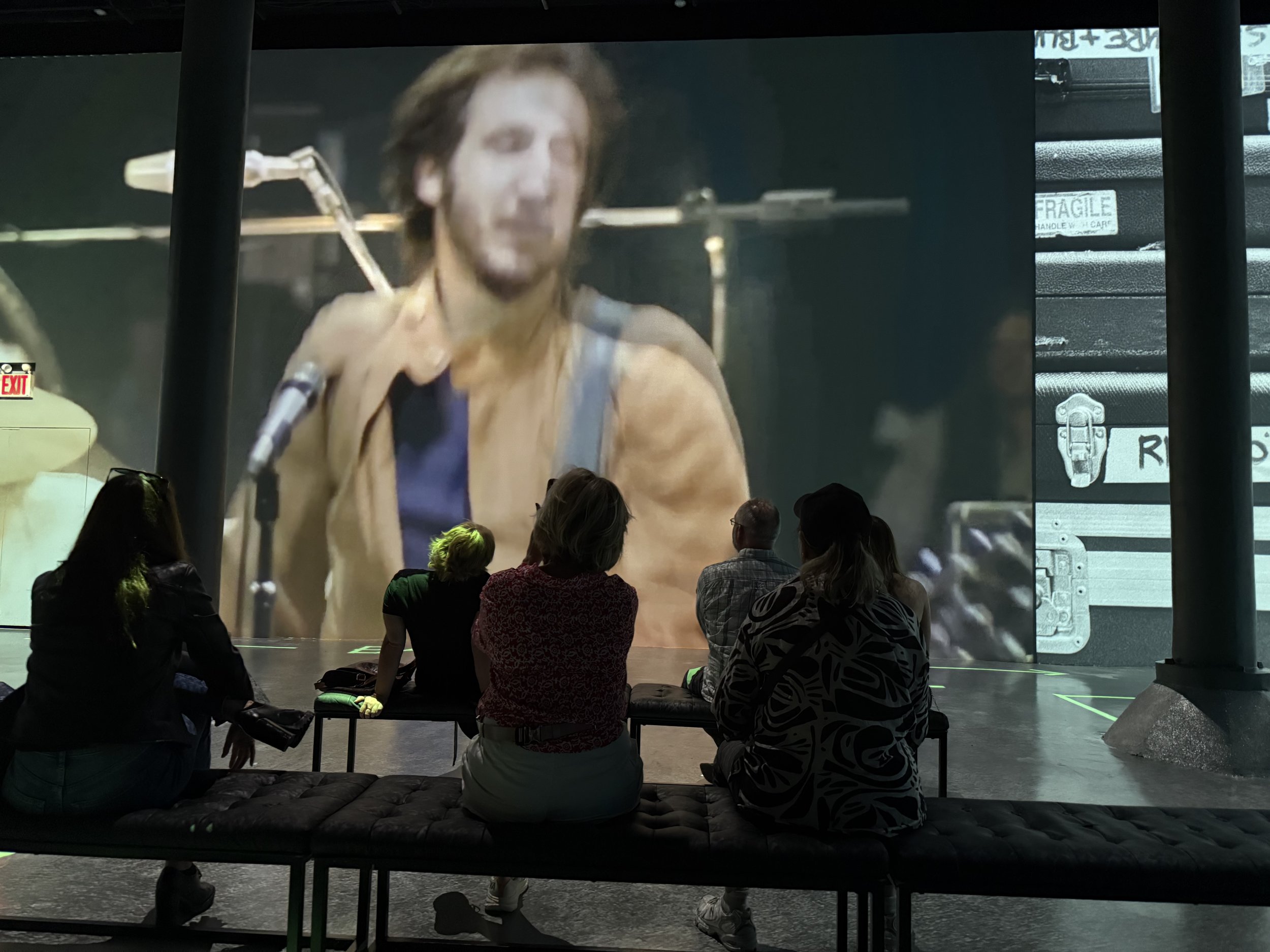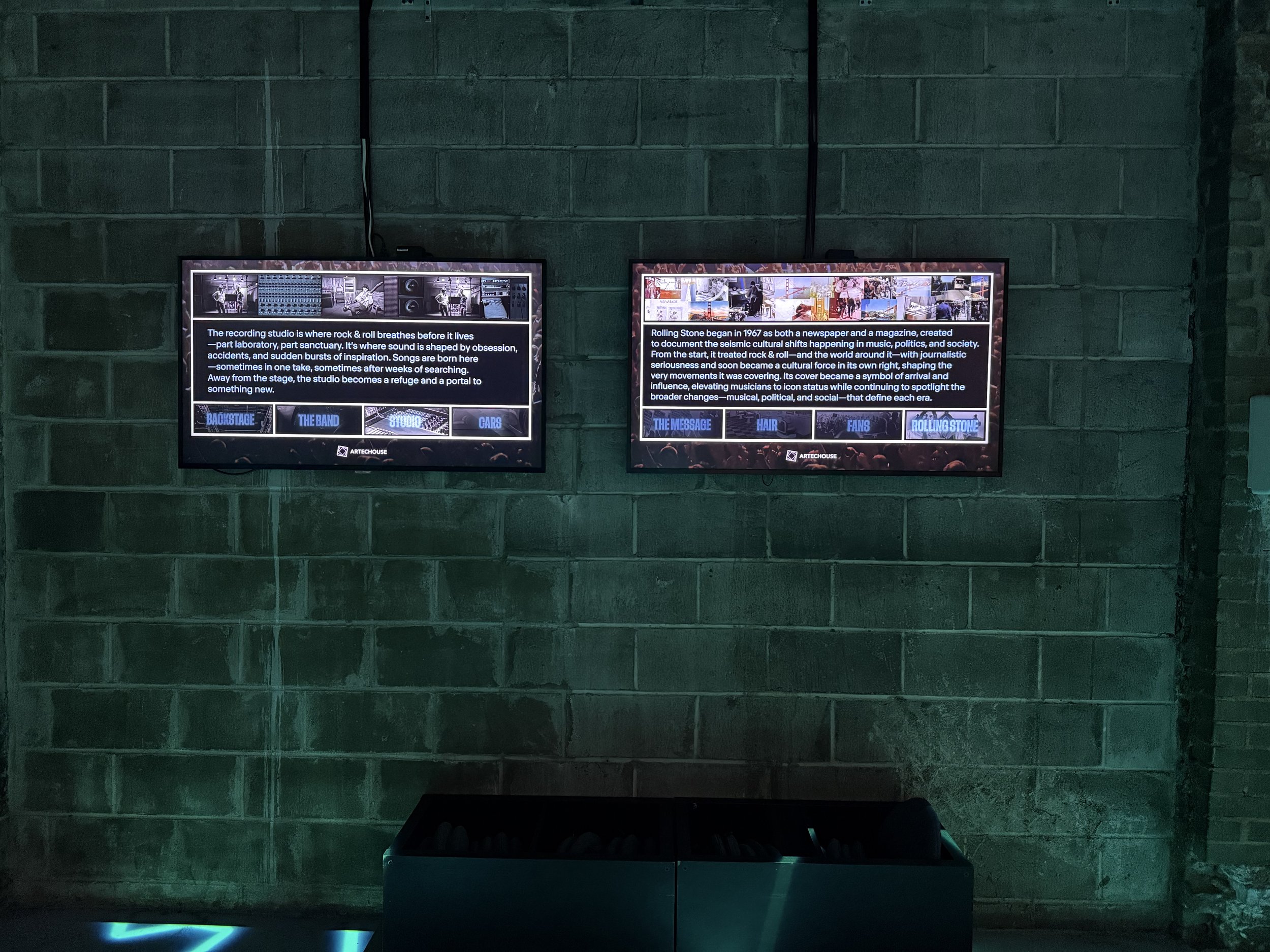Amplified at ARTECHOUSE: An Immersive Art Experience Through the History of Rock
By Cansu Peker
I went to Amplified: The Immersive Rock Experience at ARTECHOUSE recently, and it was… electric.
Presented by Rolling Stone, the experience is narrated and starts right on the hour, so they ask you to show up 15 minutes early. It’s not a casual pop-in kind of thing — they really want you to experience it from the beginning. And I get why. It’s carefully paced, unfolding like a story that threads through music, images, politics, and personal meanings.
Amplified is hosted inside ARTECHOUSE, which is a digital art space in a converted century-old boiler room. The space uses some pretty wild tech: 270º visuals, interactive elements, and 18K laser projections (I don’t know what 18K means in laser terms, but it looked sharp). You’re surrounded by floor-to-ceiling visuals, but not in a way that’s overwhelming. It feels more like you’re walking through an exciting lesson of the history and culture of rock music.
They’ve packed a ton into it — over 1000 photos, 200 videos, and 1300+ Rolling Stone covers. There’s archival footage, behind-the-scenes clips, even moments that have never been released publicly before. You end up revisiting songs and stars you’ve known forever, but from different angles. There were even some major names I somehow missed until now.
What stood out to me most was how the show doesn’t just tell the story of rock, but it also shows how rock shaped everything else: fashion, language, politics, youth culture, the way people loved or rebelled or demanded change. It touches on the protest music, the messages of liberation, the fan culture — the engine behind the music. I liked that it made space for the people behind the scenes too. The whole machine, not just the spotlight.
And it’s not only vintage rock. There’s segments that include artists like Adele, Billie Eilish, and Chapel Roan — Pink Pony Club plays, which I didn’t expect at all. I wouldn’t immediately label them as “rock,” but the show makes a case for rock being more of a spirit than a sound. That rebellious, emotional thread is still there.
It's also worth noting that they kept it PG so you can take your kids for a fun immersive time — so no sex or drugs, which are usually so tied to the stereotypical rock ‘n’ roll story. But this take focused more on values: freedom of thought, expression, and identity. It actually felt more inclusive that way, even though I was a little surprised by the omission.
At one point, they talked about how Rolling Stone started — not just as a music magazine, but a reflection of the ideas and culture rock gave rise to. It’s so cool to think about a movement being so strong that a dedicated publication had to come through. Is it fair to say it’s mirroring Digital Arts Blog?
If you’re curious about how music shapes us, or just want to be inside something visually stunning for an hour, I’d recommend going. And I have to warn you: there is something about seeing all those performances and photos stitched together that makes you want to drop everything to become a rock star. Enter at your own risk!
About ARTECHOUSE NYC
ARTECHOUSE New York City is an innovative art venue located below Chelsea Market. It provides visitors with an extraordinary digital art encounter.
About Rolling Stone
Rolling Stone is an American monthly magazine that focuses on music, politics, and popular culture. It was founded in San Francisco, California, in 1967 by Jann Wenner and the music critic Ralph J. Gleason. The magazine was first known for its coverage of rock music and political reporting by Hunter S. Thompson.


